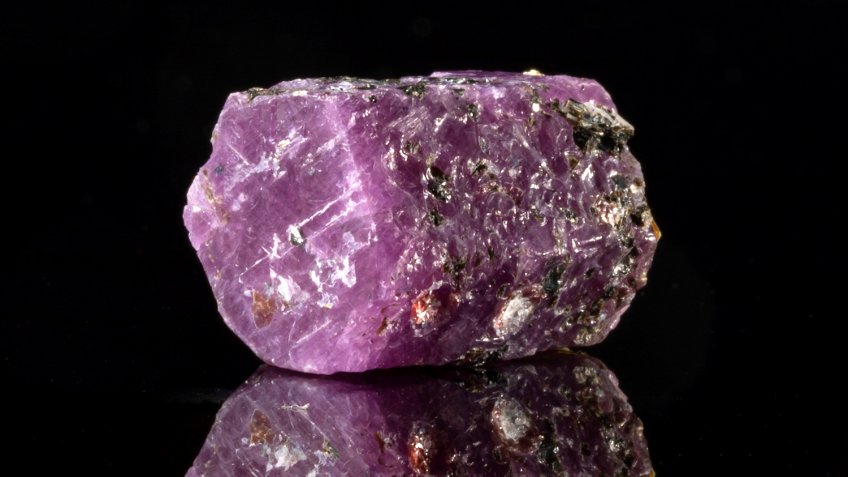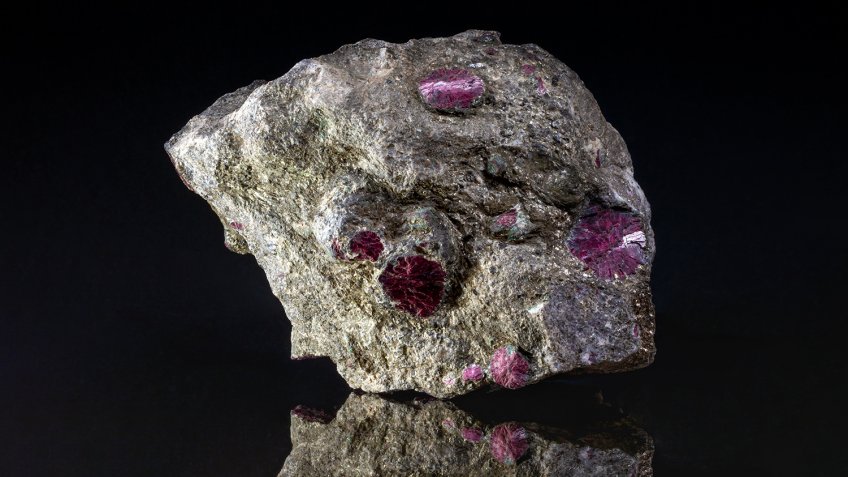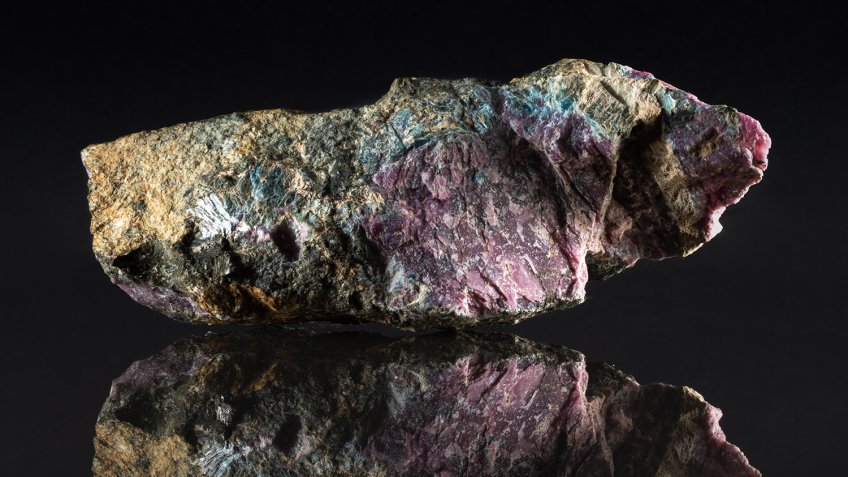
Although this stone is found on all continents but Antarctica, it remains one of the most demanded globally.
Ruby was considered a symbol of supreme power at all times. It was highly valued by world's greatest rulers, whose regalia items generally featured the stone.
Fate played a cruel joke on ruby, though. On the one hand, the mineral may glow with an immense variety of shades of red and has a hardness third only to that of diamond and moissanite. But on the other hand, rubies never grow large. The colour of a ruby is due to the element chromium which, in turn, makes the mineral fragile and fractured. Hence specimens of deep pure colour, exceeding two carats in weight, are very scarce. And rubies weighing over 30 carats attain the status of a unique sample.
Back in time, there was no definite way to ensure the stone was a fake or not. Thus other similarly coloured minerals were often mistaken for rubies. One good example is the worldwide known Black Prince's Ruby. The stone of 34 carats in weight and as large as a chicken egg was set in the British Imperial State Crown, and was called a ruby. Until before one hundred years ago, when research had shown the jewel was a red-coloured, rare variety of spinel.
Humanity knew of the gem's existence way back in the past; it was mentioned in the Bible, and it is one of the twelve precious stones set in a breastplate worn by the High Priest. The gemstone was treated as an ultimate value then - see Job 28:1-19, v18 "...for the price of wisdom is above rubies." In Christianity, rubies symbolise the blood and suffering Jesus went through upon being crucified. For this reason, many crowns were adorned with the stone. It was usually placed in the crown's centre to remind of how the son of God had been tormented. The central position of the gem also indicated the readiness of a ruler to sacrifice themselves for the people.
Since one of the main representative features of a ruby is its colour, colour nuances are what defines the stone's quality and price. Based on how the sample looks like, it can be traced up to the place where it was mined. Some of the fanciest rubies, having a rich red colour with a slight shade of blue, are found on the territories belonging now to Myanmar. Scientists estimate these specimens to be about half a million years old. In fact, rubies from Myanmar have become a standard against which samples from other parts of the world are compared. After all, rubies mined in that region retain their shimmering colour regardless of the lighting.
Deposits in Myanmar were discovered by accident. In the 15th century, Burma transported criminals to that area, who consequently found the precious gems. The remarkable finds were sent as a gift to the king, and on seeing them, he decided to show his mercy on the convicts and let them back home. Thereupon extensive ruby mining started in the area. All large samples had to be handed over to the state treasury, and miners who did not follow the rules were sentenced to death. Despite strict laws, many stole large-sized specimens, split them, and smuggled to the neighbouring territories. Ruby mines in Myanmar are still kept under state control, with only country's nationals having a right to work in them. An average price of rough ruby from Burma is, as of now, one million US dollars per carat.
Ruby has uses outside of the jewellery industry. For instance, the first-ever laser was made with a ruby crystal. Sixty years ago, scientists assembled a device that could emit an intense, focused light beam of a single wavelength. A ruby rod was taken for that purpose; it absorbed light coming from all sources pointed towards it. Yet because of peculiarities of its crystal lattice, the rod could emit light from two face ends only, thereby capable of forming a powerful, narrow streak of light. That beam was able to impact surfaces differently - for example, cut them. By the way, a precise measurement of the Earth-Moon distance owes to the use of a ruby laser, too.
In industry, artificial ruby crystals, with less ideal optical properties, are more often used. Ruby was also the first stone to have been synthesised. Auguste Verneuil, a French chemist, invented the first commercially viable process for the manufacture of synthetic gemstones. A technology known as the Verneuil process allows making artificial rubies of up to 30 carats in weight in a couple of hours. The invention of Verneuil gave a significant boost to the production of lab-grown corundum, including among others rubies.





